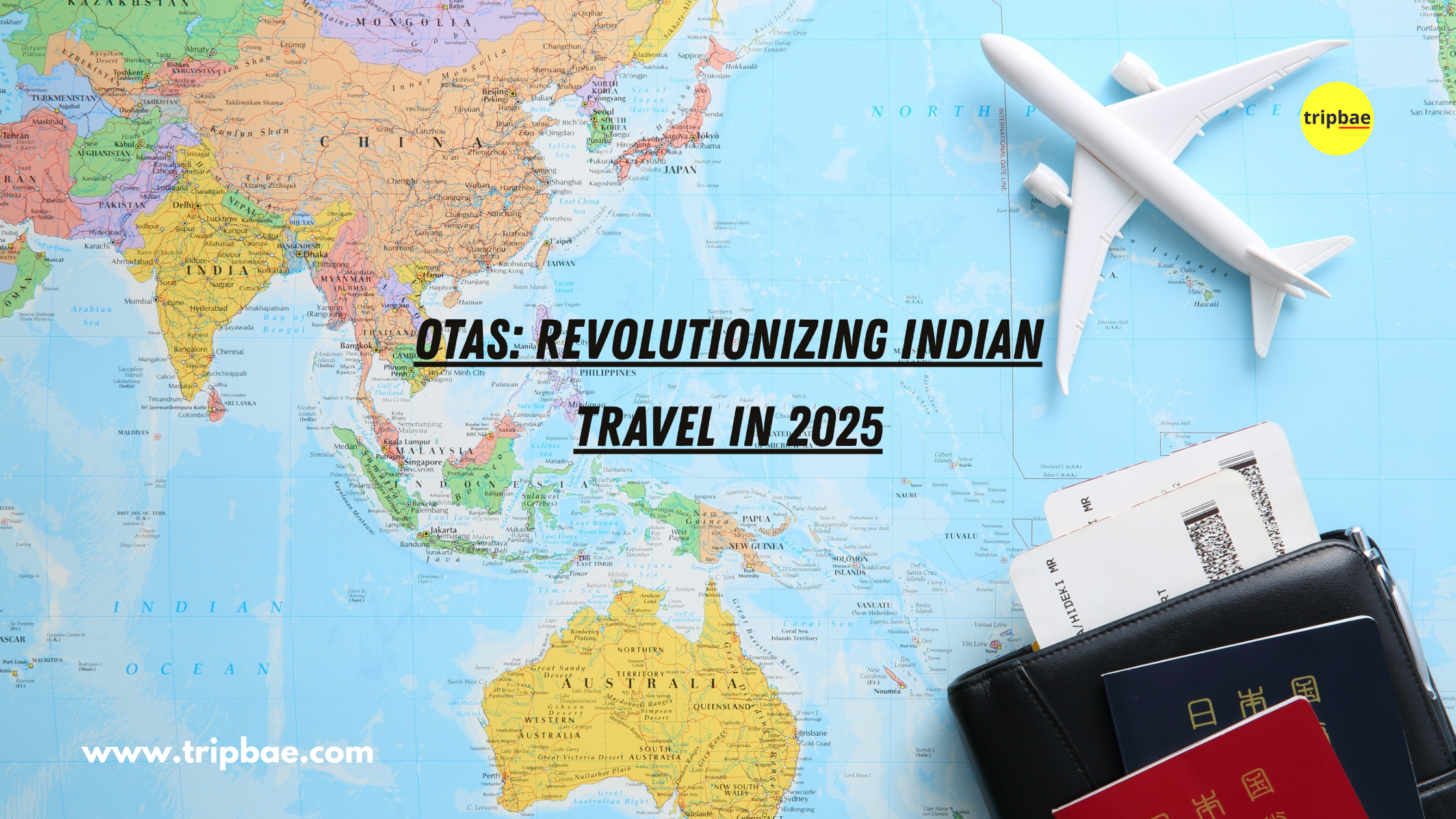India’s travel landscape has undergone a remarkable transformation over the last decade. From relying on local agents and offline bookings, Indian travelers today are embracing the convenience of OTAs (Online Travel Agencies). Between 2024 and 2025, this shift has accelerated, redefining how both leisure and business travelers plan their journeys. According to a report by Statista, the Indian online travel booking segment is expected to hit revenues of over USD 28 billion by the end of 2025, growing at a CAGR of 13% from 2021.
Why OTAs are Booming in India
The growth of OTAs can largely be attributed to three factors—digital penetration, smartphone usage, and changing consumer preferences. By early 2025, India has over 820 million internet users, making it one of the largest digital markets globally. Over 70% of travel bookings in India now happen online, with OTAs like MakeMyTrip, Yatra, EaseMyTrip, and niche players like Tripbae capturing significant market share.
Millennials and Gen Z travelers, who value speed and transparency, have been key drivers. OTAs offer real-time availability, customizable options, seamless payment gateways, and competitive prices—all of which resonate with India’s young, digitally savvy travelers. The convenience of comparing hotels, flights, or curated experiences in a few clicks has made OTAs the go-to solution for trip planning.
Impact on the Indian Travel Ecosystem
OTAs have democratized access to travel services, bringing small hotels, homestays, and local experiences to a wider audience. This has especially helped boost tourism in tier 2 and tier 3 cities, allowing lesser-known destinations like Kurinjal, Gokarna, and Chikmagalur to gain popularity among urban travelers seeking offbeat escapes. OTAs have also played a key role in promoting monsoon treks, adventure trips, and spiritual tours, helping travelers discover hidden gems across India.
During 2024, OTA platforms reported a 25% increase in weekend getaway bookings from cities like Bangalore, Mumbai, and Delhi. Two-day adventure trips, such as Kudremukh and Bandaje Falls treks, have seen a surge, with nearly 60% of bookings happening through mobile apps.
Personalization & Technology Integration
Personalization has emerged as a game-changer. Using AI and big data, OTAs now recommend itineraries, send dynamic offers, and even adjust pricing in real-time. Tools like chatbots provide instant assistance, while AR/VR tours let customers preview destinations before booking.
Travelers increasingly demand flexible cancellation policies, loyalty programs, and add-on services like insurance or airport transfers—all of which OTAs have seamlessly integrated. Platforms are also investing heavily in vernacular language support to cater to India’s diverse population, expanding their reach beyond English-speaking travelers.
Challenges and Future Outlook
Despite their success, OTAs face challenges like intense competition, rising customer acquisition costs, and the need to ensure quality service delivery by third-party partners. With growing concerns about sustainability, many OTAs have started promoting eco-friendly accommodations and responsible tourism experiences.
Looking ahead, experts predict that OTAs will become even more integrated with fintech solutions, offering embedded lending and pay-later options. By 2025, over 80% of India’s leisure travelers are expected to book at least part of their trips online, solidifying OTAs as the backbone of the travel industry.
Conclusion
OTAs have not just revolutionized bookings; they’ve reshaped the entire Indian travel ecosystem. By empowering travelers with choice, transparency, and convenience, they’re setting new standards for how India explores the world—and its own backyard. As the industry continues to evolve, OTAs will remain at the forefront, connecting curious travelers to incredible experiences.


Comment (0)